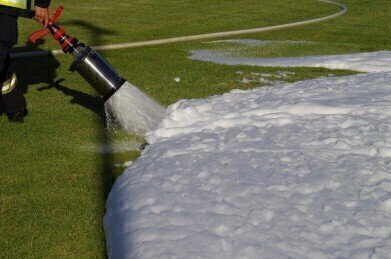Water/Wastewater
Are PFAS Emerging Contaminants?
Jul 21 2022
In recent years, the terms PFAS and emerging contaminants have become increasingly commonplace in scientific papers and environmental policies. Both refer to a group of chemicals which are used by humans in our everyday activities and which leach into the natural world as a direct consequence of their consumption. What’s more, both can persist for an unspecified period of time.
But while certain parties may use the terms interchangeably, they actually have subtle but important distinctions which set them apart. This article will explore definitions of both, before outlining where they coincide and, most crucially, where they differ, as well as why both could pose a threat to the environment, to animals, to plants and even to humans.
What are PFAS?
PFAs, or per- and polyfluoroalkyl substances, to give them their full name, are a subset of chemicals which are infamous for their extremely long half-lives. This has led to them being dubbed “forever chemicals”, since many of them can persist in the natural environment for centuries or even millennia.
They’re used in a wide range of everyday products and processes, from non-stick frying pans and firefighting foam to waterproof clothing and cosmetic items. There are currently estimated to be around 9,000 PFAS in existence and regulatory bodies around the world have implemented a number of measures aimed at limiting their spread. These generally target the manufacturers which use them in the construction of their products, or else the water companies responsible for analysing water sources and determining PFAS levels.
What are emerging contaminants?
Emerging contaminants, on the other hand, is a broader category which basically encompasses all chemicals that are present in our environment about which we know little and for which we have scant legislation in place. Sometimes called contaminants of emerging concern (CECs), these can be either newly manufactured chemicals (with more entering the marketplace and thus the natural world all the time), or else those which have been around for millennia, but about which we have only recently discovered potentially damaging properties.
As such, all PFAS are emerging contaminants – but not all emerging contaminants are PFAS. Other types of emerging contaminants which do not necessarily fall under the PFAS umbrella include heavy metals, industrial chemicals and those which are used in the cultivation of crops. The latest list of emerging contaminants as defined by the Environment Protection Agency (EPA) in the States contains just over 1,000 chemicals, though this is believed to be a gross underestimation.
Why are PFAS and emerging contaminants dangerous?
Both PFAS and emerging contaminants are generally emitted into the environment in extremely small concentrations. It’s for this reason that when they were first being used by their pioneers, there were no such concerns over their effects, since it was widely accepted that “dilution was the solution to pollution”.
However, the fact that these substances can bioaccumulate in soil, crops, air, water and even the human body over time means that they could pose a threat to the ecosystems they infiltrate and the lifeforms around them. The long-term impact of such chemicals on humans and the environment is not yet fully understood, though research is ongoing into this subject.
Digital Edition
AET 28.2 April/May 2024
May 2024
Business News - Teledyne Marine expands with the acquisition of Valeport - Signal partners with gas analysis experts in Korea Air Monitoring - Continuous Fine Particulate Emission Monitor...
View all digital editions
Events
Jul 10 2024 Birmingham, UK
Jul 21 2024 Cape Town, South Africa
Australasian Waste & Recycling Expo
Jul 24 2024 Sydney, Australia
Jul 30 2024 Jakarta, Indonesia
China Energy Summit & Exhibition
Jul 31 2024 Beijing, China


















